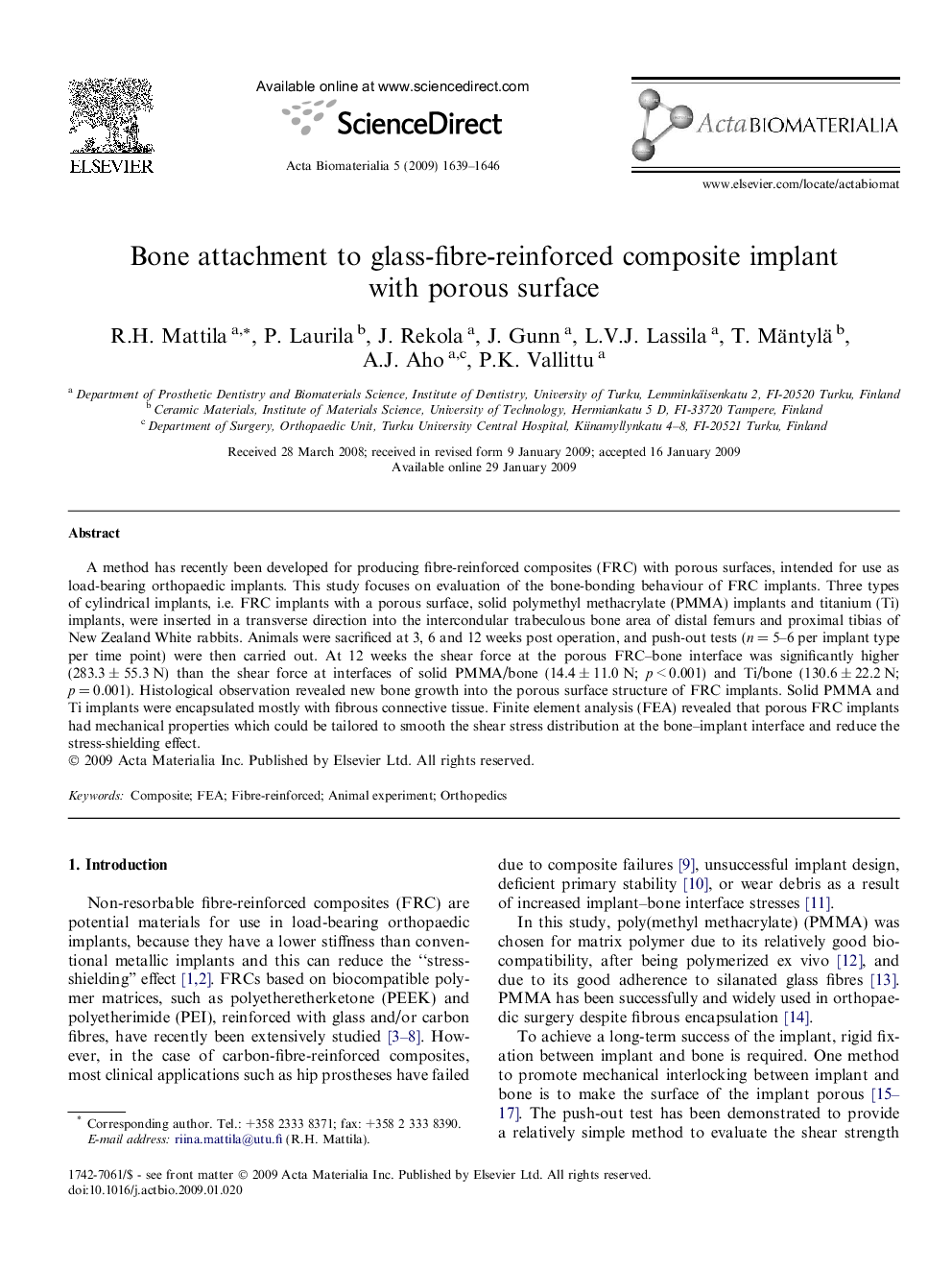| Article ID | Journal | Published Year | Pages | File Type |
|---|---|---|---|---|
| 1319 | Acta Biomaterialia | 2009 | 8 Pages |
A method has recently been developed for producing fibre-reinforced composites (FRC) with porous surfaces, intended for use as load-bearing orthopaedic implants. This study focuses on evaluation of the bone-bonding behaviour of FRC implants. Three types of cylindrical implants, i.e. FRC implants with a porous surface, solid polymethyl methacrylate (PMMA) implants and titanium (Ti) implants, were inserted in a transverse direction into the intercondular trabeculous bone area of distal femurs and proximal tibias of New Zealand White rabbits. Animals were sacrificed at 3, 6 and 12 weeks post operation, and push-out tests (n = 5–6 per implant type per time point) were then carried out. At 12 weeks the shear force at the porous FRC–bone interface was significantly higher (283.3 ± 55.3 N) than the shear force at interfaces of solid PMMA/bone (14.4 ± 11.0 N; p < 0.001) and Ti/bone (130.6 ± 22.2 N; p = 0.001). Histological observation revealed new bone growth into the porous surface structure of FRC implants. Solid PMMA and Ti implants were encapsulated mostly with fibrous connective tissue. Finite element analysis (FEA) revealed that porous FRC implants had mechanical properties which could be tailored to smooth the shear stress distribution at the bone–implant interface and reduce the stress-shielding effect.
